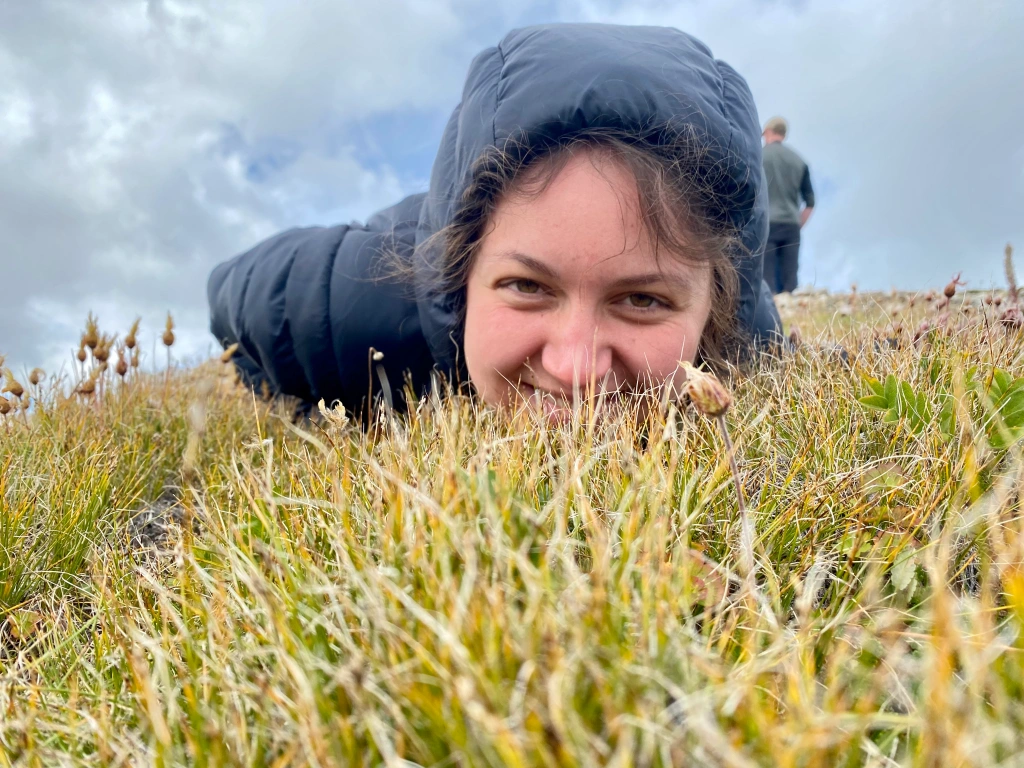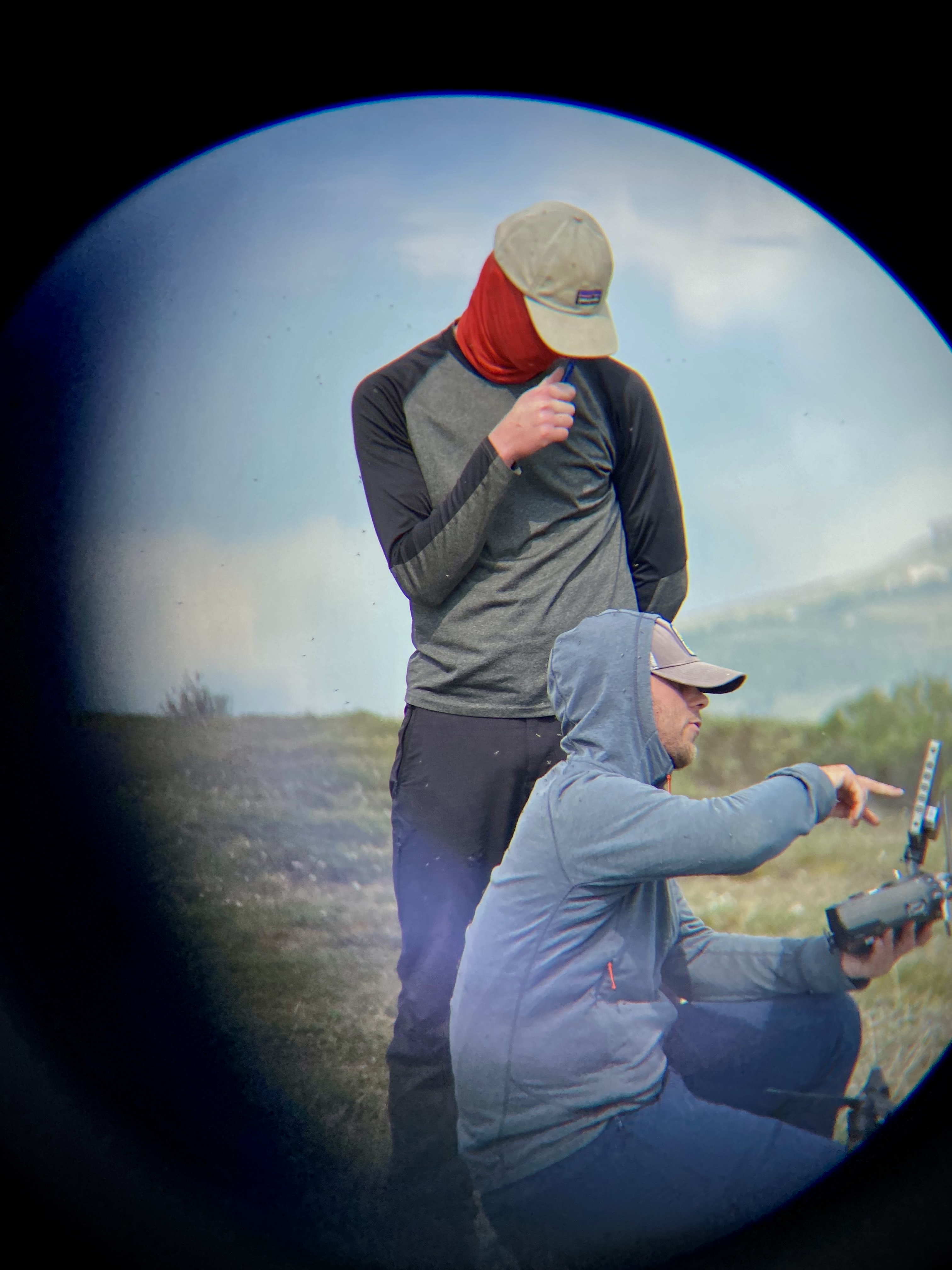As we begin the 2023 field season, we thought we’d look back on our 2022 field season to catch you up to speed on what we’re up to. Last year, Team Shrub was split between two sites in the Yukon, Kluane Lake and Qikiqtaruk – Herschel Island, and had one team member all the way over and up on Svalbard! This year we’re split again between Qikiqtaruk and Kluane in the Yukon and Qeqertarsuaq, Greenland. Across time zones and continents we’re capturing how tundra ecosystems are responding as the climate warms. Now that we are back in the field – it’s tundra time!

In 2022, we launched fieldwork for the Natural Environmental Research Council (NERC)-funded TundraTime project. The TundraTime project aims to test how plant phenology – the timing of plant growth both above and below ground – is responding as the tundra warms. In the 2023, let’s reflect on what we got up to last year to inform what we are working on this year. [And if you are interested, we’re hiring a postdoc to work on this project based in Edinburgh, apply by the 28th of August here.]



Out on the tundra, growing seasons are short and the tundra comes to life as the snow melts and the temperatures warm. An amazing photo of a red fox among the flowers (left). Close-up of moss campion flowers (top right) and pedicularis flowers (bottom right). Photos by Isla Myers-Smith


It isn’t just the plants that are responding as the climate warms, permafrost is thawing and in 2022 and 2023 were tracking that change using drones and boots on the ground with our collaborators. Photos by Isla Myers-Smith
The Arctic is warming four times more and four times faster than the rest of the planet, leading to earlier snow melt and sea ice break-up and an earlier green-up of plants in tundra ecosystems. But what happens at the end of the season both above and below ground? Do plants grow for longer, and turn colour earlier in warmer summers or do they not really change the timing of when they stop growing as winter approaches? And what will the timing of plant growth mean for the tundra carbon cycle? These are the main questions of the Tundra Time project.

We think tundra plants cue in tightly to snow melt and temperatures at the beginning of the season to start their growth, but at the end of the season, light is likely a more important cue. In our preliminary analyses, tundra plants stop growing at the same time or a bit earlier in warmer summers. But that is just the story above ground. Below-ground tundra plant roots might grow for longer into the now more thawed permafrost soils. In the TundraTime project we’re digging in to find out.
Led by Prof. Isla Myers-Smith (aka Isla), the field crew is working on a range of different research topics that all contribute to answering these questions. We’ll fill you in on all of those projects below. The theme that links all our projects together is, indeed, time. How do plants grow in a warmer Arctic and what does this mean for carbon cycling and wildlife? Our crew is on it!

Time is central to all aspects of Elise’s PhD project. Last summer, we set up time-lapse cameras (aka phenocams) across the tundra to capture the timing of plant phenology across vegetation communities and microclimate gradients. The cameras take a photo every three hours across the day, tracking plant growth in real time. In 2023, we’re back to fix all of the phenocams knocked over by muskox and to download the data and figure out how the timing of tundra growth varies across microclimates and between earlier (2023) and later (2022) snow melt years.


Noooo… not again. The muskox takes down our phenocams (left) and a muskox caught on camera in a phenocam munching on some shrubs (right). Photos by Isla Myers-Smith and a phenocam
To capture the little-understood below-ground phenology of plant roots, we also buried clusters of peat cores at our sites. We’ve been remove these cores across the summer to investigate how root growth varies across time and spanning environmental gradients. Elise’s research will help us to demystify the drivers of Arctic phenology change and shine light on the cryptic world of tundra underground and the timing of root growth.


Soil cores buried and ready for winter in 2022 (left). Photo by Zabrina Leslie
Cores being removed from the ground in 2023 (right). Photo by Isla Myers-Smith
Madi’s PhD project aims to discover how changing plant phenology influences our ability to sense the biodiversity of tundra ecosystems. Hyperspectral signatures capture light beyond the human eye. We can use this information to figure out the health status of plants, leaf nutrient levels, and maybe even the biodiversity of ecosystems.
Across the summer, the reflectance patterns of plants changes – bright green leaves in spring, yellow senescing leaves in fall, and multicoloured flowers across the summer. But how are hyperspectral signatures influenced by the timing of plant growth? One day this information might help us interpret the data from future hyperspectral satellites monitoring the world’s biodiversity from space.


Diana is investigating climatic drivers of shrub growth over time. Shrub expansion has been observed in response to climate change across the tundra and at treeline. However, not all regions respond equally and there is very little data on shrubs below the treeline and in boreal forests. Last summer, Diana was sampling stem disks from shrubs in the boreal forest at different sites in Canada and Finland to compare shrub growth from across the boreal forest and treeline.


Diana about to sample shrub stems in the boreal zone to look at the shrub rings. Photo by Jiri Subrt
Joe’s PhD project is exploring plant species composition and functional traits across elevational gradients and across the tundra biome. It isn’t just the change in the diversity of species that matters with climate change, we also need to know how the functions that ecosystems provide might be changing. So called ‘functional diversity’ is a metric of the different ways plants grow and capture energy and nutrients. Plants also provide services to other species like this dryas flower providing nectar in return for help with pollination from this fly.
Joe is characterising the role of microclimates in driving patterns of functional diversity across tundra landscapes to understand how warming could alter functional diversity over time. By comparing fine-scale field data collected in Kluane in 2022 and on Qeqertarsuaq, Greenland in 2023 with the global-scale plant composition and trait datasets, Joe hopes to identify fine-scale functional diversity distributions hidden by the often coarse-scale data used in plant trait studies.

Calum’s PhD project is investigating the drivers of greening trends observed in satellite data across the Arctic. While satellite data supports the scientific consensus that climate change is reshaping Arctic ecosystems, the data is often too low resolution to understand exactly which aspects of ecosystems are changing. Just like a pixelated photograph, where you can’t quite see what the image represents, coarse resolution satellite imagery obscures our understanding of what is happening on the ground.

Calum’s work uses a sensor with characteristics identical to the European Space Agency’s Sentinel-2 satellites, which is mounted to a drone and flown approx. 100m above the tundra. This gives a much higher resolution image of the landscape than satellites provide, as the sensor on Sentinel-2 is ~786km above the ground! Calum will then compare the high-resolution drone imagery with the lower-resolution satellite imagery to try and better define whether snow, vegetation, permafrost or other physical components of Arctic tundra ecosystems are driving the changes we observe from space.

Erica is working her master’s degree, and collected lots of data for her research last summer. She is projecting the magnitude of shrubification and and increasing shrub biomass with projected future warming in the Porcupine and Fortymile Caribou Herds between the Yukon Territory and Alaska. For her shrub change scenarios, Erica uses shrub growth rates from a ‘common garden’ experiment, based at Kluane Lake, which has been set up by Team Shrub and monitored every summer since 2013.
The purpose of the common garden experiment is to assess the growth of different shrub species (Arctic willow – Salix arctica, Richard’s willow – Salix richardsonii and Diamond Leaf willow – Salix pulchra) from Arctic and alpine source populations, under warmer temperature conditions. Do willows grow taller in a warmer environment? How do the Arctic willows respond to the change in the light environment after they have moved 1000 km to the south? And can we use the growth rates of willows growing in this warmer environment to quantify shrubification with future warming?

The local responses of shrub growth to environmental conditions are highly heterogeneous across Arctic-alpine ecosystems and the responses of shrub phenology to fine-scale environmental conditions remain understudied. Erica hopes to compare growth rates from the common garden experiment, with growth rates seen in shrubs in wild populations, and use these different scenarios to project shrub expansion across wildlife habitats under future warming conditions.

During the 2022 field season, our intrepid field assistants were Jiri Subrt, Erica Zaja, Zabrina Leslie and Clara Surprenant and our research intern was Sydney McLeod, in 2023 Else Radeloff and three interns are joining the Yukon field crew. These key members of our team have helped us at every step of the way and making core contributions to the science. Not only did they work so hard, they also kept our spirits up with tundra dance parties, throw-back movie nights and delicious and elegant field-prepared meals. Don’t worry, we all shared the cooking, it’s just that some of our field assistants were particularly talented chefs! More reflections on the 2022 summer from the perspective of National Geographic Society STEM field assistant Zabrina are coming in a future post!

All the way on the other side of the Arctic, Mariana spent a good amount of her summer hunched over trying to identify tiny plants in the Svalbard archipelago. Her postdoctoral project is researching the effects of increased shrub growth on the diversity of other plant groups, particularly lichens and mosses. Armed with a point-frame and a hand lens, she has been surveying plots across glacier valleys and mountains, taking in the breathtaking views of landscapes and wildlife in between pin drops. With these data, Mariana hopes to better understand what is actually happening under the shrubs. Even though these plants are small, big changes might be occurring in this miniature world.


A whole world of mosses in the understory of Salix polaris (right). Photo by Mariana García Criado
The 2022 Field Season was a big success, and we’re continuing the work as the 2023 season is already underway! Team Shrub has once again split, with a team in Canada, who have started removing soil cores, sampling plant traits and spectra and re-righting the phenocams, and another in Greenland working on collecting drone imagery and surveying plant plots. As always, there are challenges that we face and adventures underway as we conduct this tundra field research. More details on this year’s fieldwork will come once we finish posting our old blog posts ‘from the vault’… stay tuned.

























































































































































